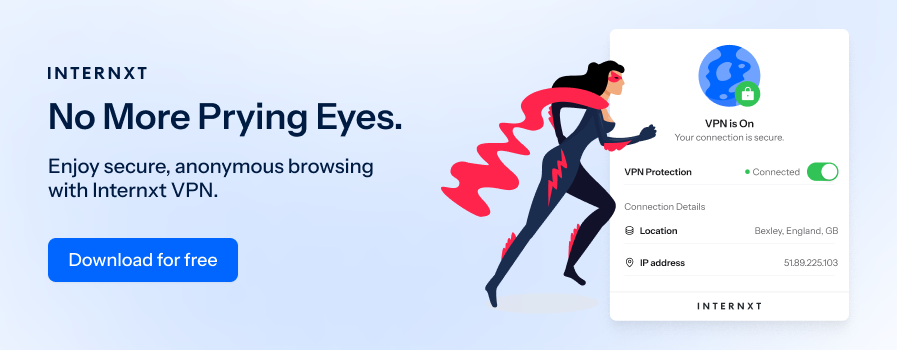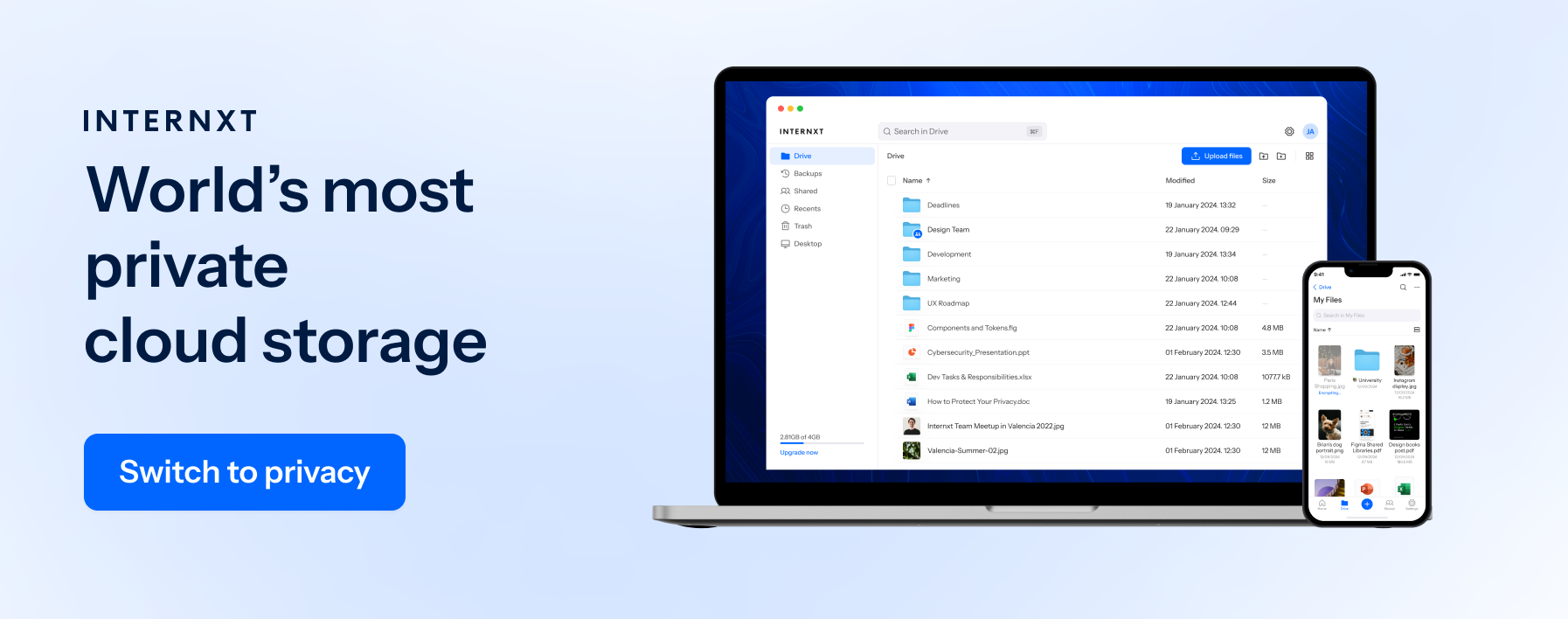Top 7 Challenges of Cybersecurity of 2024

Malicious cybercrime attacks aim to damage networks and systems used by companies, potentially leading to problems like data loss or huge financial losses.
Implementing proper cybersecurity measures can help organizations like yours reduce the risk of falling victim to a cyber attack or at least minimize the potential damage. But strong defenses start with knowing the enemy.
This article introduces you to significant cybersecurity challenges and how to protect yourself from them and protect your data.
Let’s get started!
Table of contents
- What is cybersecurity?
- Why is cybersecurity a must for organizations?
- Top 7 cybersecurity challenges you may face this year
- Internet of Things
- Cloud security threats
- Phishing
- AI and generative AI phishing
- Wiper malware
- Blockchain
- Ransomware
What is cybersecurity?
Cybersecurity is the practice of protecting systems and networks connected over the internet from potential threats. It keeps computers, mobile devices, servers, software, and other internet-connected systems safe from digital attacks.
These attacks often aim to access, change, or destroy sensitive information, extort money from users, or disrupt business processes.
Why is cybersecurity a must for organizations?
Cybercrime costs are projected to reach about $10.5 trillion globally by 2025. Successful cyber attacks place a huge financial strain on affected organizations—and we’re not just talking about ransom payments or stolen data. Cyber attacks may disrupt business operations, leading to downtime and lost productivity.
Cybersecurity ensures you have adequate protection measures against possible threats.
Additionally, cybercriminals are constantly developing new ways to attack systems. A strong security posture allows you to avoid upcoming cybersecurity challenges and protect valuable assets.

Top 7 cybersecurity challenges you may face this year
To guard against potential security threats, you must train yourself and your employees to identify and prevent them.
Consider adopting cybersecurity training programs or introducing employees to platforms like VulnHub or Hack The Box. These platforms provide an interface for users to practice hacking, pinpoint system vulnerabilities and solutions, and familiarize themselves with potential security threats to proactively avoid them.
Here are 7 cybersecurity challenges to look out for this year and tips you can also follow:
Internet of Things
IoT (Internet of Things) is a network of physical devices with built-in sensors, software, and other technologies that allow the collection and exchange of data across the Internet.
IoT systems help organizations work better and improve operational efficiency. Manufacturing industries, for instance, can use IoT sensors to optimize the production process, and logistics companies can use IoT devices to track deliveries.
The downside is that IoT devices are susceptible to security breaches. Murtuza Jadliwala of the University of Texas discovered that hackers can hijack infrared smart bulbs and use them to steal personal information or control other IoT devices connected to the same network.
All an attacker needs to do is find the weakest link, and they’ll be able to access a network and wreak havoc on connected systems.
Additionally, IoT devices may be prone to cybersecurity issues via:
- Insecure communication via unencrypted protocols means that the message sent from one device to another is left bare for third parties to see. So, data like login credentials and other sensitive information are more accessible for hackers to intercept.
- API vulnerabilities can provide a backdoor for attackers to infiltrate IoT systems. They can lead to unauthorized access, device control, or the installation of malware that facilitates other attacks or network breaches.
How can these IoT cybersecurity challenges be addressed?
- Change default passwords for your devices when you start using any IoT system or device.
- Use strong and unique passwords. A general recommendation is to use a mix of lowercase and uppercase letters alongside numbers and symbols. For instance, “General01AB@” is a stronger password than “general1.”
- Keep devices updated. Install firmware updates for your devices as soon as they become available.
- Connect your devices to a secure Wi-Fi network. Your Wi-Fi router should preferably have strong encryption (WPA2 or WPA3). Avoid connecting devices to public Wi-Fi networks.
Also, consider using a separate network for your IoT devices. This way, you can isolate them from other devices on your network in case of a breach.
Cloud security threats
Cloud platforms allow businesses to access computing resources like storage, processing power, and software over the internet.
With cloud services, potential cybersecurity challenges may come in the form of third-party threats like:
- Account hijacking: may happen through phishing emails that lure you or employees into revealing login information. We’ll talk about these later. It may also be possible through brute-force attacks that attempt to guess weak passwords. Or, other similar tactics.
- Loopholes from weak APIs allow hackers to inject malicious codes into your system. For instance, API parameters (inputs or outputs) may be vulnerable to injection attacks if not sanitized or adequately validated.
To guard against cloud third-party threats, choose a cloud provider with strong security and robust encryption algorithms.
Also, use strong access controls, such as multi-factor authentication and strong passwords, to grant users access to any system or application in your organization.
Regularly assess your cloud environment to identify vulnerabilities and implement prompt patching procedures. You can do this with cloud security solutions like:
- IAM (Identity and Access Management), which manages user identities and cloud resource access.
- IdPs (Identity providers) and SIEM (Security Information and Event Management) tools for real-time monitoring, threat detection, and alerts.
- Cloud Access Security Brokers (CASBs) are gateways between your on-site and cloud infrastructure. These tools help to monitor and enforce security policies on all your cloud applications and services.

Additionally, encrypt sensitive data before uploading it to the cloud. Client-side encryption ensures your data remains confidential even if the cloud provider experiences a security breach.
Ideally, the cloud provider should also encrypt your data at rest and in transit (server-side encryption).
Phishing
Phishers attempt to lure you in various subtle ways. They may impersonate legitimate organizations like banks, insurance companies, and other service providers.
Hackers may send fake SMS messages or emails that appear genuine and urge recipients to take a specific action (mostly to click a link or download a file).
Note that phishers take advantage of fear and urgency. So, they may send a message warning you of an account suspension, potential security breach, or urgent updates. Here’s a typical example:
Often, phishing emails pressure you into acting quickly without giving you time to think. Sometimes, they may even present enticing offers that are “too good” to miss.
That said, here's how to protect yourself from phishing attacks.
Avoid clicking on links or attachments from unknown senders
Suspicious email addresses mostly have a mismatch between the sender name and email address. For instance, an email impersonating your bank might have misspellings, typos, or unusual characters (like symbols or numbers. See this example below:
Some fake email addresses may use free domains (e.g., @gmail.com or @yahoo.com). For a professional organization, you should expect that they have their domain. The ideal email should be “support@xyz.com” instead of “xys01*@gmail.com.” Imagine receiving an email from “info.amazon@gmail.com” or “amazon@yahoo.com.” That’s fishy, right?
Hover over links in your emails first
Before clicking on links, hover over them first. This way, you can see the actuarial URL it directs you to. Don’t be deceived by the neat text that hides the link. See the example below:
Additionally, try running simulated phishing attacks—this is more like a practice hacking technique where you send legitimate-looking phishing emails to employees. This way, you can tell which employees may be vulnerable and train them to identify red flags.
AI and generative AI phishing
Although there are some generative risks with Artificial Intelligence, AI has proven its benefits (and limitations) since its boom in 2022.
However, hackers can now use them to “perfect” their attacks. Here are some ways they can leverage them:
- Attackers can use AI tools to improve grammar and spelling, enabling them to craft more convincing emails that recipients may not suspect. They can even craft highly believable BEC scams, potentially leading to significant financial losses for organizations.
- Generative AI tools can also help hackers analyze vast amounts of publicly available data across the internet. With well-processed information, phishers can create more personalized scam emails for their targets.
- These tools can also create fake landing pages that look just like the original, serving as bait for unsuspecting individuals.
Since hackers can harness AI tools for evil, proactively invest in email security solutions with advanced filtering capabilities. These tools can detect subtle variations in language or content that AI-generated phishing emails may use.
Also, enforce multi-factor authentication for all user accounts to ensure hackers can't access your devices.
Wiper malware
Wiper malware is engineered to destroy, corrupt, or delete data on infected systems. It typically targets specific files or entire drives, aiming to delete or overwrite important data.
Wiper malware often targets two major areas of your company’s digital environment:
Master Boot Record (MBR): This file contains essential code that initiates the boot process and helps computers locate the operating system (OS) files needed to start up.
If hackers successfully destroy the MBR, the boot process will crash, and your files will become inaccessible.
Master File Table (MFT): a critical database within the new technology file system (NTFS) used by modern Windows operating systems.

It’s more like an index that keeps track of where all the system files and folders are located. A wiper that targets the MFT can corrupt or erase these files, making it impossible for the OS to identify or access them.
One notable example of wiper malware is AcidRain. This malware was used in a supply chain attack on Viasat’s satellite internet service. The wiper overwrote essential data on the internal memory of Viasat’s KA-SAT network, causing thousands of modems across Europe to be non-responsive.
Here are some preventive measures against wiper attacks:
- Segment your network to isolate critical systems from less critical ones. This helps to limit possible damages caused by a wiper attack.
- Regularly back up your data so you have an uninfected “stash” that you can recover in case of an attack. You can adopt the 3-2-1-1 rule, which requires you to keep three copies of your data—two copies on different media types and one offsite copy.
- Update your system with the latest security patches to address newer vulnerabilities that attackers may exploit.
You can also implement endpoint detection and response solutions (EDRs) like CrowdStrike. These EDRs can monitor system activity and detect suspicious behavior from possible wiper attacks.
Blockchain
Blockchain is the technology behind cryptocurrencies like Bitcoin. It is a global platform that enables two or more parties to initiate secure transactions.
Businesses can also use blockchain to store and share important information securely. This is remarkable for organizations involved in healthcare, IoT, supply chain management, or any venture that could thrive on a protected, decentralized network.

Some major cybersecurity challenges that may affect blockchains include:
- The interception of vulnerable code to steal data that’s on its way to internet service providers (ISPs). In 2016, a hacker used exploited code to steal about $50 million worth of Ether on an Ethereum-based platform.
- Compromised blockchain keys could allow malicious actors to access them unauthorizedly.
- Hostile blockchain takeovers where hackers gain control of 51% of a network’s mining power to manipulate the ledger. This is referred to as a 51% attack.
If you intend to use blockchain in your organization, implement role-based access controls (RBAC) or multi-signature wallets to secure access to your blockchain.
Also, have an up-to-date disaster recovery plan in case of a cyberattack or system failure.
Ransomware
Ransomware is a form of malware designed to extort money from victims. Typically, attackers hack into a system and deploy the ransomware, which then encrypts vital information or locks out the victim from their devices.
After a “ransom” has been paid, the hacker returns access to the victim. These attacks may lead to total data loss if the organization fails to pay the ransom–which can be bad when there’s no proper backup.
Ransomware attacks are one of the huge cybersecurity challenges targeting IT and data professionals or executives because of the high ransoms they demand for businesses.
According to a report by Sophos, 59% of organizations were affected by a ransomware attack in the previous year. So, it’s a common cybersecurity challenge that should not be neglected.
To prevent ransomware attacks, use strong passwords and access controls. Also, update your software and security patches.
Firewalls and endpoint protection can help scan traffic coming into your network to detect malware and other threats. For instance, a next-generation firewall (NGFW) can examine the content of data passing through your network. If ransomware is found, the file carrying it will be trashed.
Finally, backups of critical data should be kept to ensure they are easily restored during a ransomware attack.

Cybersecurity challenges and future threat protection
Cybersecurity challenges pose problems to organizations of all sizes.
This post gave you a comprehensive understanding of these cybersecurity challenges and their solutions. They include IoT security breaches, cloud third-party attacks, traditional phishing attacks, and generative AI phishing. Wipers and ransomware attacks can also pose problems. There are also security issues related to blockchain usage.
By staying informed, you can take steps to strengthen your defenses through proper cybersecurity procedures.

